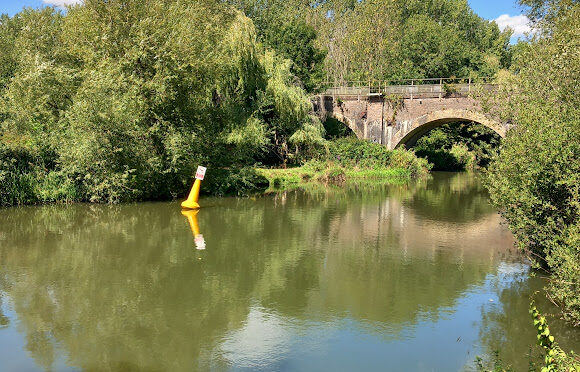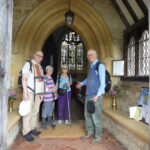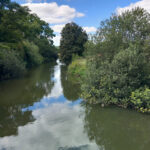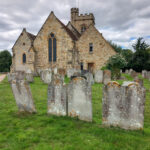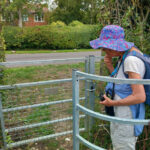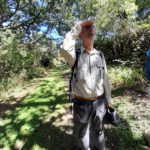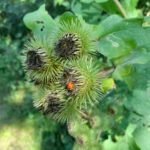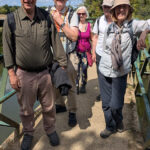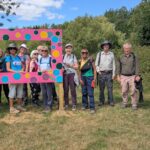Nineteen, well initially seventeen ramblers, set off from Hildenborough to visit the kissing gate the club had donated with a now added inscribed plaque to former members of the Club. One member missed her train, so the leader remained at the station for the next train. The two of us eventually caught up with the main
group walking through open, tree lined, fields before they had reached the pleasant village of Leigh, ably led by Chris.
In the knowledge that a planned visit, later in the walk, to a pub was no longer an option, we headed to the Fleur de Lis pub in Leigh for early refreshment.
Refreshed we headed out to the watery surrounds of Haysden Country Park and the Medway River for picnicking, blackberry picking and baby fish feeding (unwanted Danish pastry)!
We then passed through part of the Eden Valley Walk, leafy lanes and footpaths lined by hedgerows (and blackberries!) back to Hildenborough station. With a wait of nearly an hour for a train a café at a nearby golf club came to our thirsty salvation.
Kim. Photos by Kim, Joyanna, Pam, Gillian

